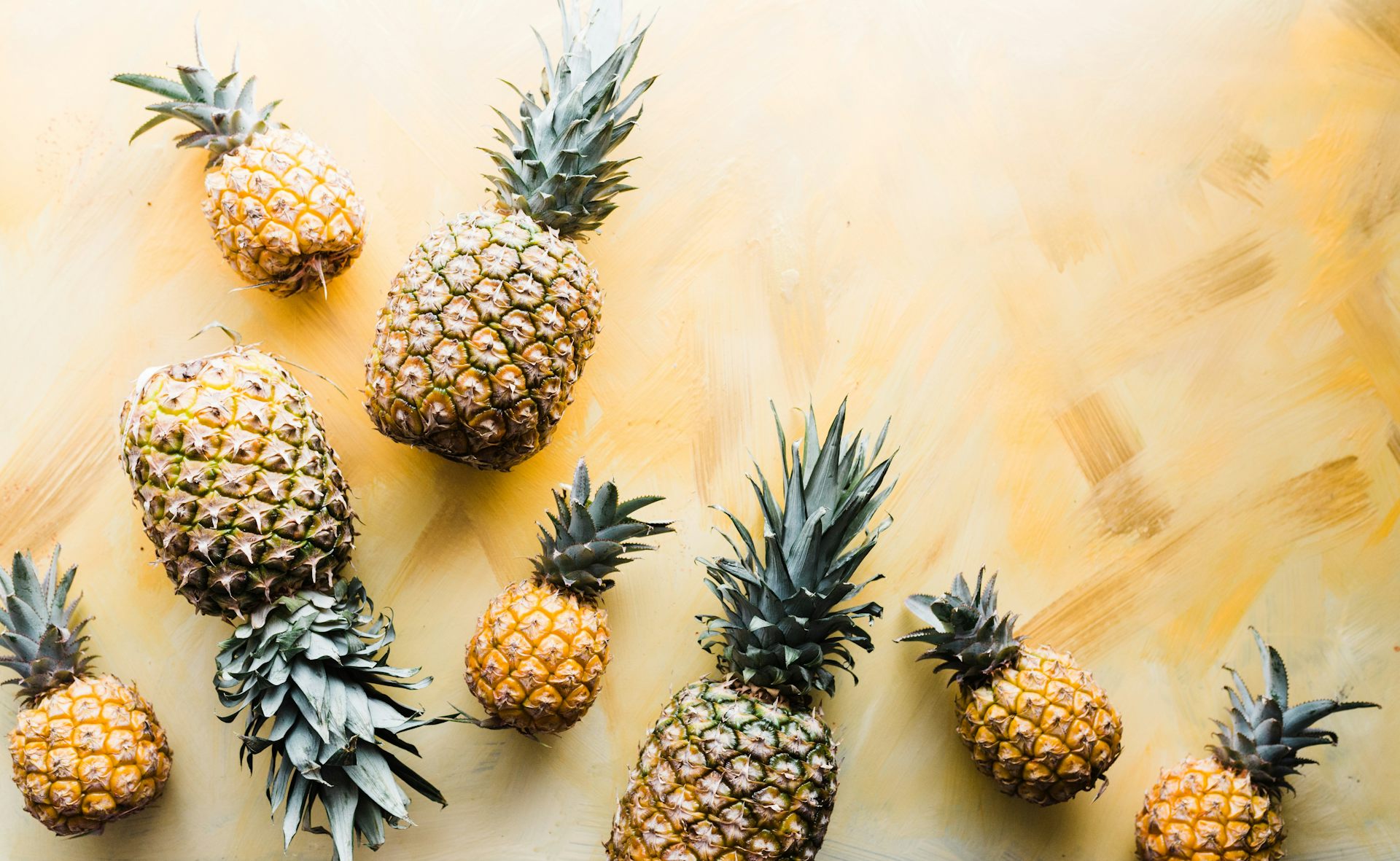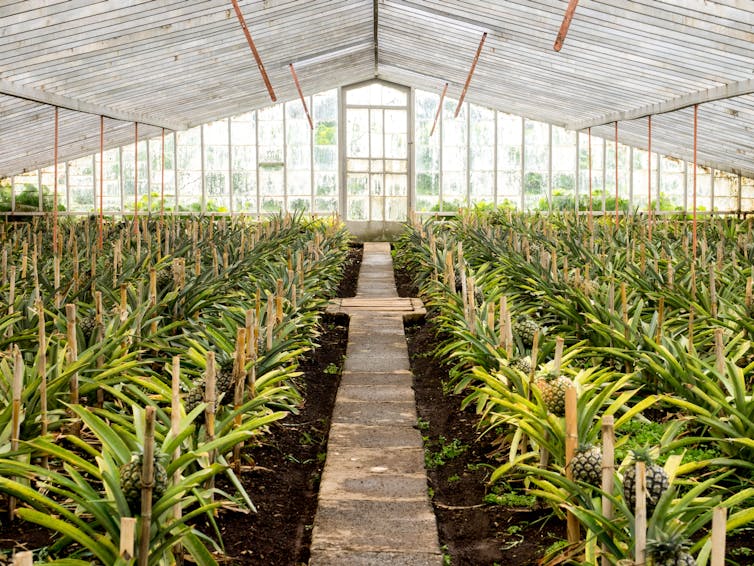
A stack of pancakes ladened with syrup, a frothy latte posed next to a white MacBook, a deep pan pizza oozing with cheese. Instagram has made “food porn” – images that portray food in an appetising or aesthetically appealing way – commonplace. Food is now the most photographed subject on the platform, and #food, #foodporn, #instafood and #yummy are all among the most popular hashtags.
One 2017 survey found that 69% of millennials regularly post photos of their food or drink on social media. In many of these images, food is used as a prop alongside other items, such as handbags, jewellery and trainers, in order to display a particular lifestyle and identity to the outside world.
In itself, this isn’t new. People have always found ways to use food to showcase their likes, desires and status. In the UK, two prime examples of this are the pineapple and celery.
King Pine
The pineapple has always been associated with prestige and luxury due its exotic appearance. It first appeared in Britain in 1668, gaining notoriety when Charles II used it as part of a public relations opportunity.
At the time, England and France were involved in a heated debate over rights to the island of St Kitts. When the French ambassador visited Charles II to discuss matters, the king ordered a pineapple to be imported from Barbados and perched it at the top of a pyramid of fruit at dinner. He then proceeded to cut it up and eat it. In doing so, Charles II asserted the reach of England’s global power.
The king christened the pineapple “King Pine” and even commissioned a painting of himself being presented it by his royal gardener: an early form of the food selfie.

By the Georgian era, the first pineapples were being cultivated in Britain. The efforts it took to produce meant that by the time a fruit bloomed, it was valued at £60 (roughly £5,000). Concerned that eating such high-value fruit was a waste, owners opted to display pineapples as dinnertime ornaments, passing them from party to party until they rotted.
In response, ceramics companies began to manufacture pineapple stands and pedestals. These devices enabled the pineapple to be slotted into a central hole, with slices of other fruits laid around the edge to serve to guests. Catalogues of the period are filled with unique designs for consumers to browse. Many still lifes were also commissioned by owners keen to flaunt their pineapples. Pineapple rental shops sprung up across the country for those who could not afford to cultivate them and people even started to carry pineapples under their arm as a sign of status.
Such was their symbolic worth that maids who transported them were deemed at great risk of being accosted by thieves. In 1807, there were several court cases for pineapple theft at the Old Bailey, the most notorious being that of Mr Godding, who was sentenced to seven years transportation to Australia for stealing seven pineapples.

The pineapple lost its social cachet in the mid-Victorian era, when steamships began to import them regularly from the colonies. This decreased their price significantly and opened up their consumption to the working classes. Inevitably, the upper classes sought a new food to distinguish themselves from the “masses”. The answer? Celery.
An expensive luxury
Celery was first cultivated in Britain in the 1800s in the wetlands of East Anglia. Its production was extremely labour intensive, as trenches had to be built in which to grow it and it had to be regularly dug up to preserve the whiteness of its stalk. These difficulties meant that celery was a rare and expensive vegetable in Victorian Britain, costing around 33 shillings (roughly £180).
Like the pineapple, the upper classes were hesitant to consume celery, given the expense involved in its cultivation. As a result, canny manufacturers started producing “celery vases” – tall tulip-shaped glass bowls placed atop a pedestal. The entire bunch of celery was cleaned and scraped, then placed into the celery vase with its leafy top still intact.
The combination of the light-refracted glass and the “bouquet” of celery created a dramatic centrepiece for the dining table that boldly displayed the owner’s wealth. The upper classes commissioned still lifes of their celery and etiquette books for ladies were produced suggesting the best table layouts to accentuate the vegetable.
By the late 1880s, the price of celery began to decrease as easier-to-grow varieties developed. As a result, celery started to be eaten rather than merely looked at. This led to celery vases being replaced by celery dishes, which were sold as part of a set accompanied by four salt dishes.

By the turn of the 20th century, celery was present on the menus of most hotels and restaurants in Britain. It also featured as the main ingredient of recipes in cookbooks, often in unique and now forgotten ways, such as au velouté (in a light gravy), à la Espagniole (in a rich demi-glace) and au gratin (sprinkled with breadcrumbs). Celery was even served in first-class cabins on the Titanic. Like the pineapple, celery had also become a high target for thieves. Local newspapers regularly reported stories of men being sentenced to two months’ hard labour for stealing the vegetable.
As cultivation methods improved, celery became an everyman’s item, forcing the upper classes to look once again for a new food luxury. Today, celery is almost universally despised, topping recent polls in Britain, the US and Japan for the least liked food. But it’s clear that the Victorians adored it, as the Georgians did the pineapple.
Lauren Alex O’ Hagan, Research Associate in the Centre for Language and Communication Research, Cardiff University



Leave a Reply